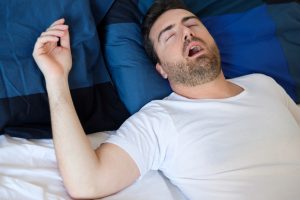Posted on Monday, December 3rd, 2018 at 7:23 am

The study stated that its purpose was “to determine the proportion of older Americans at risk for OSA in a large, representative sample of Medicare beneficiaries and to characterize the national scope of gaps in OSA evaluation, diagnosis, and treatment in these at‐risk individuals.” The NHATS sleep module is similar to the Snoring-Tired-Observed-Pressure-BMI-Age-Neck-Gender questionnaire commonly abbreviated simply as STOP-BANG.
OSA Study
The study estimated that the 1,052 participants the NHATS sleep module was administered to corresponded to 7,082,963 Medicare beneficiaries. Based on this evaluation, 3,948,716 people, or 56 percent, were believed to be elevated OSA risk.
Of the group, 3,633,571, or 94 percent, had no evaluation. Of the 315,145 who got either polysomnography (PSG) or home sleep apnea testing (HSAT) evaluations, 295,307, or 94 percent, had an OSA diagnosis. Of those diagnosed with OSA, 53,703, or 18 percent, sought no treatment while 241,603 received OSA treatment.
STOP-BANG questionnaires often ask respondents the following:
- Snore — Do you snore loudly? Snoring is perhaps the most common symptom of sleep apnea.
- Tired — Do you feel tired during the day? Fatigue is a common symptom in many sleep apnea cases.
- Observed — Has anybody observed you stopping breathing during sleep? Many people are unaware they may have stopped breathing while sleeping, but a spouse or other loved one may have noticed this very concerning sign.
- Pressure — Have you been or are you being treated for high blood pressure? Sleep apnea can actually cause elevated blood pressure.
- BMI — Is your body mass index more than 35 kg/m2? BMI is a measure of fat based on a person’s height and weight, and overweight individuals are more likely to suffer from sleep apnea.
- Age — Are you older than 50 years of age? A study published by the American Thoracic Society (ATS) stated that sleep-related difficulties become common with age and found the prevalence of sleep apnea to be 3.2 percent in adult men 20 years of age to 44 years of age, 11.3 percent in adult men 45 years of age to 64 years of age, and 18.1 percent in adult men 61 years of age to 100 years of age.
- Neck — Is your neck circumference greater than 16 inches or 41 centimeters if you are a female, or 17 inches or 43 centimeters if you are a male? A larger neck means more potential obstruction for an airway.
- Gender — Are you a man? Men are two to three times more likely than women to have sleep apnea.
The Journal of the American Geriatrics Society study found a weighted proportion that was 57 percent female and 43 percent male, with 53 percent of participants being married and 45 percent being unmarried. Of the participants:
- 13 percent were between 65 years of age and 69 years of age
- 30 percent were between 70 years of age and 74 years of age
- 21 percent were between 75 years of age and 79 years of age
- 17 percent were between 80 years of age and 84 years of age
- 12 percent were between 85 years of age and 90 years of age
- 7 percent were 90 years of age or older.
Get OSA Help Today
Silent Night Therapy helps people all over New York with sleep apnea issues. Call (631) 983-2463 or contact us online to see how we can help you, and schedule an appointment with us today.